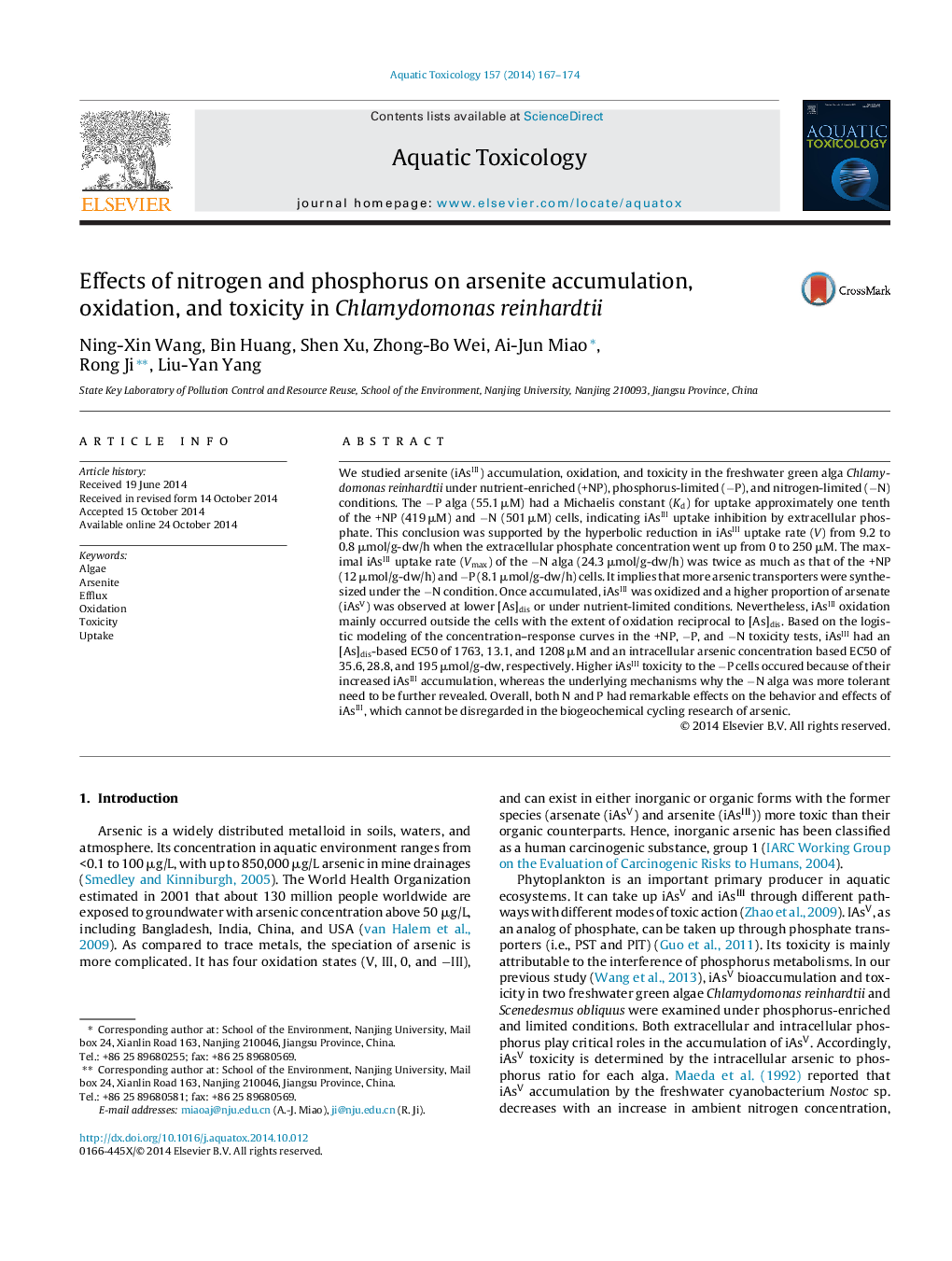| کد مقاله | کد نشریه | سال انتشار | مقاله انگلیسی | نسخه تمام متن |
|---|---|---|---|---|
| 4529305 | 1625948 | 2014 | 8 صفحه PDF | دانلود رایگان |

• Extracellular but not intracellular P inhibited iAsIII uptake.
• N limitation induced the synthesis of iAsIII transporters.
• iAsIII oxidation occurred not only on the cell surface but also in the cells.
• Both iAsIII and iAsV could be excreted out of the cells at the same rate.
• iAsIII toxicity was unaffected by P but alleviated under the −N condition.
We studied arsenite (iAsIII) accumulation, oxidation, and toxicity in the freshwater green alga Chlamydomonas reinhardtii under nutrient-enriched (+NP), phosphorus-limited (−P), and nitrogen-limited (−N) conditions. The −P alga (55.1 μM) had a Michaelis constant (Kd) for uptake approximately one tenth of the +NP (419 μM) and −N (501 μM) cells, indicating iAsIII uptake inhibition by extracellular phosphate. This conclusion was supported by the hyperbolic reduction in iAsIII uptake rate (V) from 9.2 to 0.8 μmol/g-dw/h when the extracellular phosphate concentration went up from 0 to 250 μM. The maximal iAsIII uptake rate (Vmax) of the −N alga (24.3 μmol/g-dw/h) was twice as much as that of the +NP (12 μmol/g-dw/h) and −P (8.1 μmol/g-dw/h) cells. It implies that more arsenic transporters were synthesized under the −N condition. Once accumulated, iAsIII was oxidized and a higher proportion of arsenate (iAsV) was observed at lower [As]dis or under nutrient-limited conditions. Nevertheless, iAsIII oxidation mainly occurred outside the cells with the extent of oxidation reciprocal to [As]dis. Based on the logistic modeling of the concentration–response curves in the +NP, −P, and −N toxicity tests, iAsIII had an [As]dis-based EC50 of 1763, 13.1, and 1208 μM and an intracellular arsenic concentration based EC50 of 35.6, 28.8, and 195 μmol/g-dw, respectively. Higher iAsIII toxicity to the −P cells occured because of their increased iAsIII accumulation, whereas the underlying mechanisms why the −N alga was more tolerant need to be further revealed. Overall, both N and P had remarkable effects on the behavior and effects of iAsIII, which cannot be disregarded in the biogeochemical cycling research of arsenic.
Journal: Aquatic Toxicology - Volume 157, December 2014, Pages 167–174